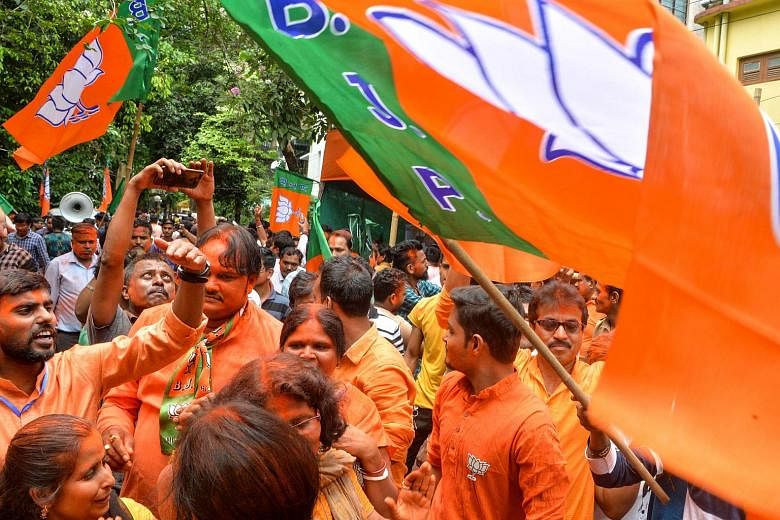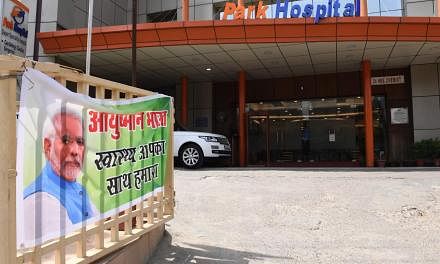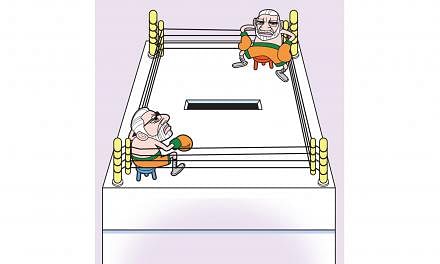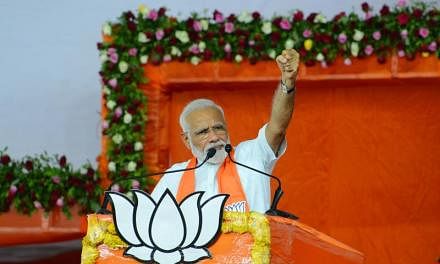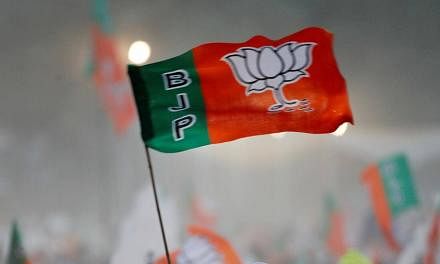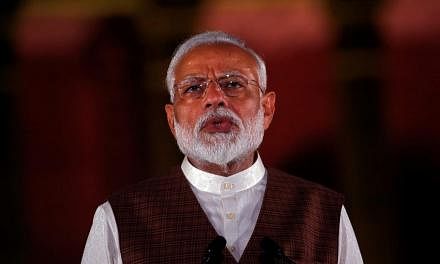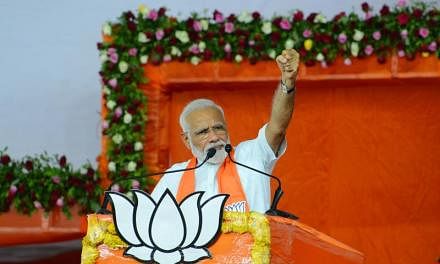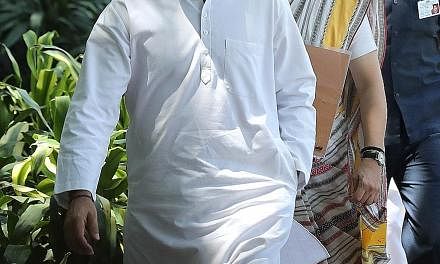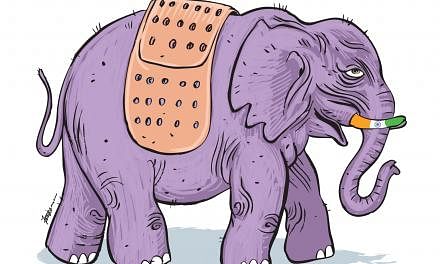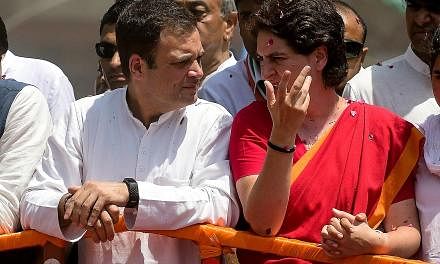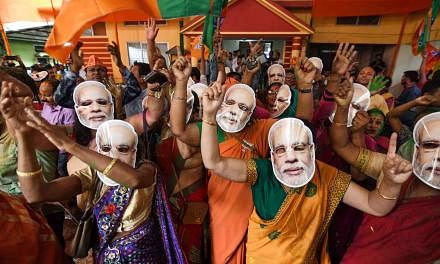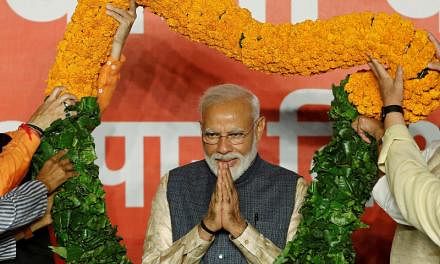NEW DELHI - Defying predictions of a major slump in its seat share in the politically important state of Uttar Pradesh, the Bharatiya Janata Party (BJP) seems to have staved off a stiff challenge from a local alliance of three regional parties.
Early trends indicate a lead for the BJP in 55 seats, with 24 for the alliance and just one for the Congress.
The alliance, or gathbandhan as it has come to be known, consists of the Samajwadi Party, Bahujan Samaj Party and Rashtriya Lok Dal. Together, they expected to consolidate anti-BJP votes amongst lower caste Hindus and Muslims in the state.
The battle was closely watched because the road to federal power in India for any political party, it is often said, runs through Uttar Pradesh. The country's most populous state, it accounts for 80 of the 543 elected seats in the Lok Sabha, the lower house of India's Parliament. In the 2014 parliamentary polls, the BJP won around a fourth of its total haul - 71 out of 282 seats - from this northern Indian state.
In one of the biggest upsets of the election, Congress president Rahul Gandhi lost his seat in the family bastion of Amethi to the BJP's Smriti Irani.
The BJP had amassed 42.6 per cent of the vote share in the 2014 Lok Sabha elections, thanks largely to a wave of support for Narendra Modi from upper caste members as well those from marginalised sections.
But contrary to predictions this year that the regional alliance would wean disgruntled lower caste voters away from the BJP, early trends indicate this not to have been the case, given that the transfer of voter support for one party to another party's candidate in the alliance has not worked out as smoothly as predicted. The Samajwadi Party and Bahujan Samaj Party have been bitter rivals and the level of collaboration between its cadres failed to match the organised might of the BJP machinery.
Some of the key factors that were supposed to have worked against the BJP include agrarian distress, unemployment, and the menace of stray cattle, which rose dramatically in numbers because of a overzealous ban by the state government on cattle slaughter.
The surprise appointment of Mr Yogi Adityanath, a local upper caste Hindu monk as the state's chief minister in 2017, also did not go down well with the state's lower caste members, who had helped bring BJP to power in state elections that year. Uttar Pradesh is dominated by lower caste Hindus, who account for a majority of the population.
But these challenges seemed to have paled against the appeal of Mr Modi as a strong leader, an image that was reinforced by India's counter-strike in Balakot, Pakistan, in February, after 40 Indian security personnel were killed in a suicide bombing that was allegedly backed by a Pakistan-based terrorist group. His focus on development issues seems to have also clicked with voters, who have increasingly transformed India's parliamentary elections into a presidential-style one. Their vote was not for the local BJP candidate but Mr Modi.
With its current impressive lead, not only has the BJP proved wrong the polls that gave it around 30 seats in the state, itmay also have made up for a potential loss of around 18 seats in Uttar Pradesh by a surge in West Bengal. Whereas the party had won just two seats here in 2014, it currently has a lead in 17 seats. According to early trends, BJP seems to have performed really well in central and northwestern Uttar Pradesh. The alliance, on the other hand, is leading almost entirely in seats where Muslims and lower caste Hindus account for more than half of the population.
Despite its numerical strength, critics dubbed the alliance as opportunistic and said it had failed to offer a "policy alternative" to the Modi-led BJP government, relying solely on instead caste calculations to carry it forward. The alliance's edge seems, moreover, to have been blunted by the failure to rope in Congress into the formation. The party also contested a majority of the seats in the state, potentially splitting the anti-BJP vote here.
